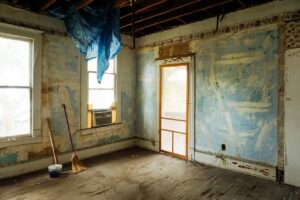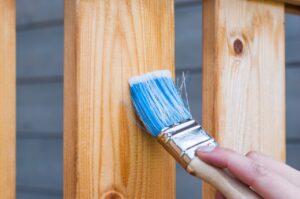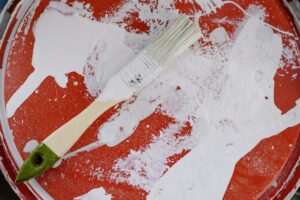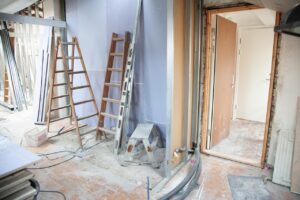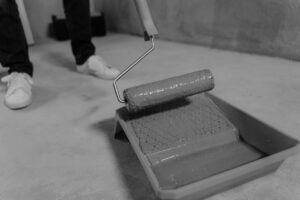
Exterior House Painting 101: What You Need To Know
Introduction: The Importance Of Exterior House Painting The exterior of your home is the first thing people see, and it can greatly impact the overall aesthetic appeal and value of your property. Exterior house painting not only enhances the appearance of your home but also serves as a protective barrier against the elements, helping to prevent damage and maintain its structural integrity. Over time, exposure to the sun, wind, and rain can cause the paint on your home’s exterior to fade, peel, or crack. This not only looks unsightly but can also lead to costly repairs if left untreated. Regular exterior house painting can help to extend the life of your home’s exterior and protect it from weather-related damage. In addition to the functional benefits, a fresh coat of paint can also give your home a new look and boost its curb appeal. Whether you’re looking to refresh the existing color or try something completely new, exterior house painting is a cost-effective way to transform the look of your home and make a lasting impression on visitors and potential buyers. In this article, we’ll explore everything you need to know about exterior house painting, from choosing the right time to paint and preparing the surface to selecting the right paint colors and techniques for achieving professional-looking results. Choosing The Right Time To Paint Your Home’s Exterior Choosing the right time to paint your home’s exterior is crucial for achieving the best results and ensuring the longevity of the paint job. While exterior house painting can be done at any time of the year, certain weather conditions can impact the outcome of the project and affect the paint’s durability. The ideal time to paint your home’s exterior is during mild and dry weather conditions, typically in the spring or fall. Extreme temperatures, either too hot or too cold, can cause the paint to not adhere properly or dry too quickly, leading to cracks and peeling. High humidity can also impact the drying process, leading to a longer curing time and potential for moisture-related damage. In addition to weather conditions, it’s important to consider the condition of the surface to be painted. If there is any visible damage, such as cracks, holes, or water damage, it’s important to address these issues before painting. Depending on the extent of the damage, repairs may need to be done before painting can begin, which could impact the timeline. Another factor to consider is your schedule and availability. Exterior house painting can take several days or even weeks to complete, depending on the size of your home and the scope of the project. It’s important to plan ahead and ensure you have enough time to complete the project without rushing or compromising the quality of the work. Preparing Your Home’s Exterior For Painting Proper preparation is key to achieving a successful exterior house painting project. The following steps can help ensure your home’s exterior is properly prepared before painting: 1. Clean The Surface: The first step is to clean the surface to be painted thoroughly. This includes removing any dirt, grime, or mold that may have accumulated on the surface. A pressure washer or a stiff brush can be used to clean the surface. Allow the surface to dry completely before moving on to the next step. 2. Scrape And Sand: Next, scrape off any loose or peeling paint using a scraper. Sand the surface to create a smooth and even surface for the paint to adhere to. This step is crucial for achieving a long-lasting paint job. 3. Repair Damage: If there are any holes, cracks, or damage to the surface, it’s important to repair them before painting. Use a filler or caulk to fill in any holes or gaps, and allow it to dry completely before sanding the surface again. 4. Protect Surrounding Areas: Cover surrounding areas such as windows, doors, and plants with plastic or drop cloths to protect them from paint splatters or drips. 5. Prime The Surface: Applying a primer before painting can help the paint adhere better and last longer. Apply a coat of primer to the surface and allow it to dry completely before applying the topcoat of paint. 6. Choose The Right Paint: Select a high-quality paint that is designed for exterior use and is suited for the climate in your area. It’s also important to choose the right finish, such as matte or gloss, depending on the desired look and durability. By properly preparing your home’s exterior before painting, you can ensure a smooth and long-lasting paint job that will enhance the appearance and value of your property. Tools And Materials You’ll Need For Exterior House Painting To achieve a successful exterior house painting project, you’ll need the right tools and materials. Here are some of the essential items you’ll need: 1. Paint Brushes And Rollers: Choose high-quality paint brushes and rollers that are designed for exterior use. Look for brushes with synthetic bristles or nylon-polyester blends that are durable and can hold a lot of paint. 2. Paint Sprayer: A paint sprayer can be a time-saving tool for larger surfaces. Look for a sprayer that is designed for exterior use and can handle the type of paint you’ll be using. 3. Paint Scrapers And Sandpaper: Scrapers and sandpaper are essential for preparing the surface before painting. Choose a scraper with a comfortable grip and a variety of blades for different types of surfaces. Sandpaper with different grits can be used to create a smooth and even surface. 4. Caulk And Sealant: Caulk and sealant are used to fill in gaps and cracks in the surface. Choose a product that is designed for exterior use and can withstand the climate in your area. 5. Drop Cloths And Plastic Sheeting: Covering surrounding areas with drop cloths and plastic sheeting can protect them from paint splatters or drips. Look for a heavy-duty plastic that can withstand wind and rain. 6. Ladder And Scaffolding: Depending on the height of

